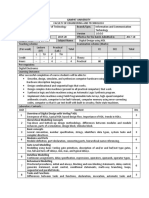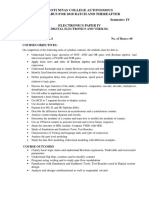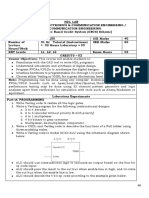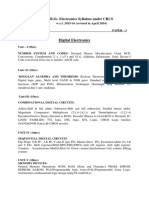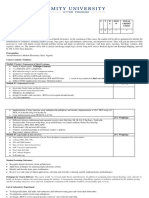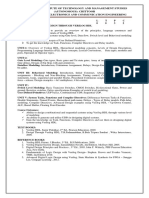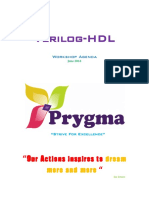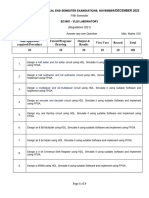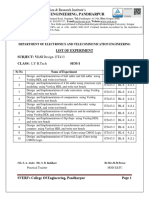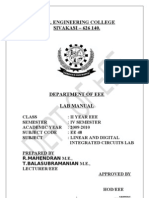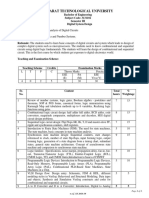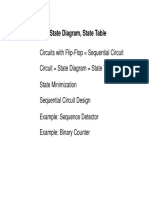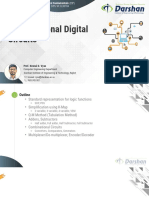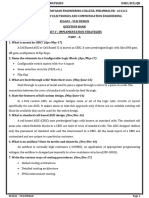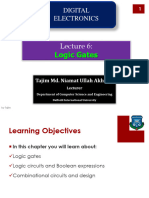0% found this document useful (0 votes)
21 views3 pagesDigital Systems Lab-Syllabus
The document outlines the curriculum for the Digital Systems Lab at the Indian Institute of Technology Tirupati, focusing on digital circuits using discrete components, Verilog HDL programming, and FPGA implementation. It includes practical experiments on logic gates, adders, multiplexers, and various digital systems, along with evaluation criteria for attendance and performance. The lab emphasizes hands-on experience with both hardware and software tools, including ModelSim and Vivado.
Uploaded by
Kumar BellikattiCopyright
© © All Rights Reserved
We take content rights seriously. If you suspect this is your content, claim it here.
Available Formats
Download as PDF, TXT or read online on Scribd
0% found this document useful (0 votes)
21 views3 pagesDigital Systems Lab-Syllabus
The document outlines the curriculum for the Digital Systems Lab at the Indian Institute of Technology Tirupati, focusing on digital circuits using discrete components, Verilog HDL programming, and FPGA implementation. It includes practical experiments on logic gates, adders, multiplexers, and various digital systems, along with evaluation criteria for attendance and performance. The lab emphasizes hands-on experience with both hardware and software tools, including ModelSim and Vivado.
Uploaded by
Kumar BellikattiCopyright
© © All Rights Reserved
We take content rights seriously. If you suspect this is your content, claim it here.
Available Formats
Download as PDF, TXT or read online on Scribd
/ 3
